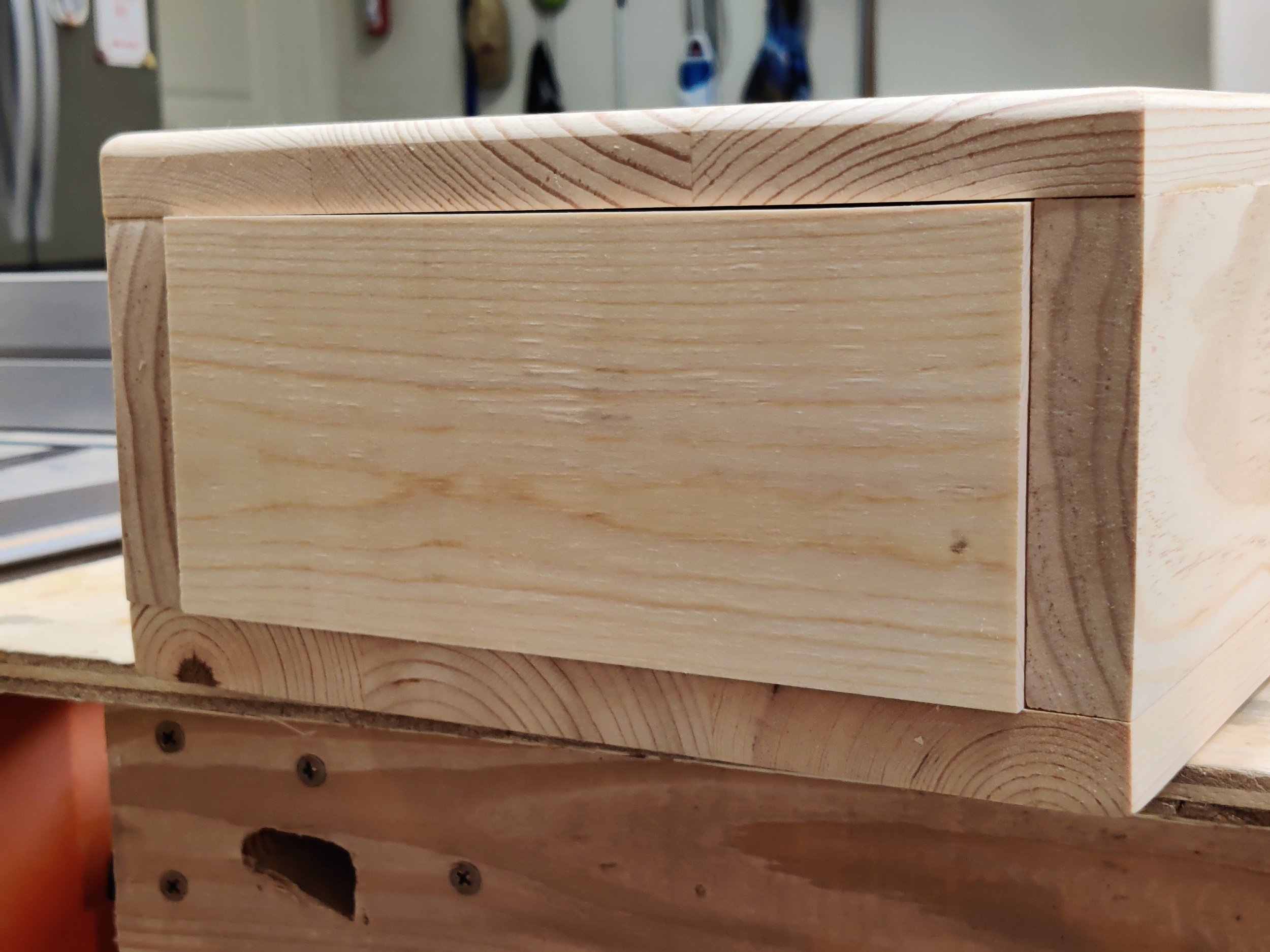Measure Once and Cut to Fit
I wish I knew this starting out. It’s a super simple beginner tip that will save you a ton of time and wasted wood. It’s called, cutting to fit. What that means is, you don’t measure twice and cut once. You measure once and cut 10 times. Here’s how it works.
This method uses a miter saw. If you don’t have a miter saw don’t fret, there are alternatives down below.
Say you want to fit a board perfectly between two boards. Measure to see how big the opening is and mark your board. Then head over to the miter saw and make a cut just a little bit long. You want to sneak up on your final fit so cutting your line is not a good idea at this stage. You never know, your mark may be a little off or your pencil line thickness could throw you off. You can always cut more off but you can’t put it back on.
Now try to fit the board in place. It shouldn’t fit because it’s too long, but that’s okay. Take your board back to the miter saw, put it against the fence, push the saw all the way down but don’t turn it on, just keep it all the way down. Now slide it all the way up against the blade. Clamp or hold your board nice and tight and let the saw blade go back up. You’ll feel the teeth catch a little as you raised the blade. Now make your cut.
You’ll notice you barely skimmed the board, trimming off a tiny amount. Go ahead and try to fit it again. If it’s still too long keep going until you get the perfect fit.
This process may take a while, especially the first time you do it, but you’ll get better at getting close initially so less fine tuning is needed. The key is to fine tune your piece, sneaking ever closer with each pass until your piece fits perfectly.
Now, you might be saying, “Great tip but I don’t have a miter saw so what do I do?” There are many ways to accomplish this same task.
Perfect fit on the width. This is for an inset drawer, I added an even gap all the way across the top to allow for expansion and contraction, otherwise this drawer will stick in the summer.
Hand Plane and Shooting Board
If you are a hand tool kind of person you can use a hand plane and a shooting board, here’s a link to Paul Seller’s YouTube video. I personally don’t have a shooting board. The short version is it’s a jig with an exact 90 degree board used as a stop and a spot to run your hand plane along to shave off tiny bits of the board and achieve a perfectly square cut and tight fit.
Circular Saw and Square
For those without a hand plane, you can use a circular saw too. Just clamp a square to the work piece, make a cut, and slowly tap that square over bit by bit until you achieve that fit you are looking for. This isn’t the easiest or fastest method, but it will work if it’s your only option.
This isn’t an extensive list, just ways I know of to sneak up on a cut. Leave me a comment if you have other tips you would like to share!




